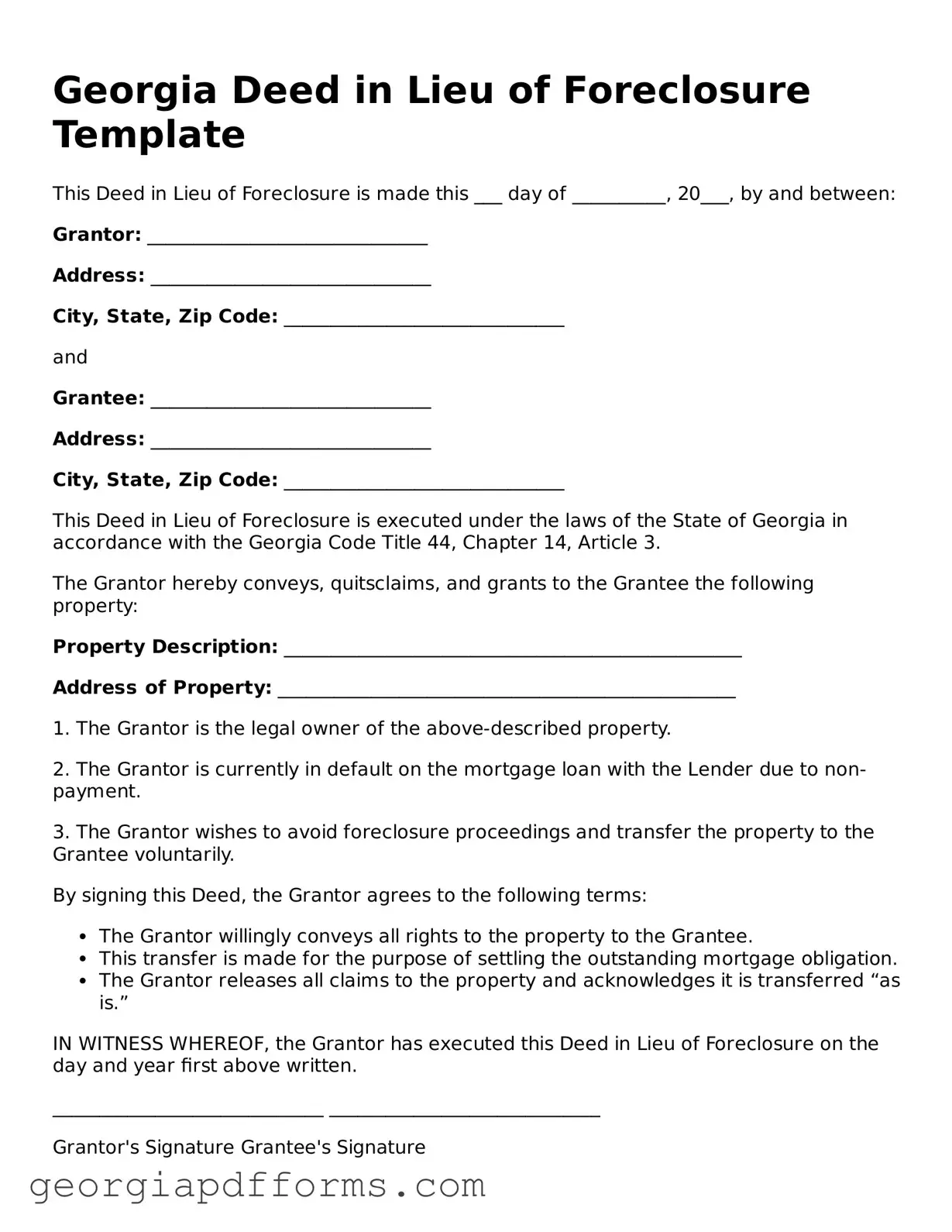Georgia Deed in Lieu of Foreclosure Template
This Deed in Lieu of Foreclosure is made this ___ day of __________, 20___, by and between:
Grantor: ______________________________
Address: ______________________________
City, State, Zip Code: ______________________________
and
Grantee: ______________________________
Address: ______________________________
City, State, Zip Code: ______________________________
This Deed in Lieu of Foreclosure is executed under the laws of the State of Georgia in accordance with the Georgia Code Title 44, Chapter 14, Article 3.
The Grantor hereby conveys, quitsclaims, and grants to the Grantee the following property:
Property Description: _________________________________________________
Address of Property: _________________________________________________
1. The Grantor is the legal owner of the above-described property.
2. The Grantor is currently in default on the mortgage loan with the Lender due to non-payment.
3. The Grantor wishes to avoid foreclosure proceedings and transfer the property to the Grantee voluntarily.
By signing this Deed, the Grantor agrees to the following terms:
- The Grantor willingly conveys all rights to the property to the Grantee.
- This transfer is made for the purpose of settling the outstanding mortgage obligation.
- The Grantor releases all claims to the property and acknowledges it is transferred “as is.”
IN WITNESS WHEREOF, the Grantor has executed this Deed in Lieu of Foreclosure on the day and year first above written.
_____________________________ _____________________________
Grantor's Signature Grantee's Signature
_____________________________
Notary Public
My Commission Expires: ___________________________
